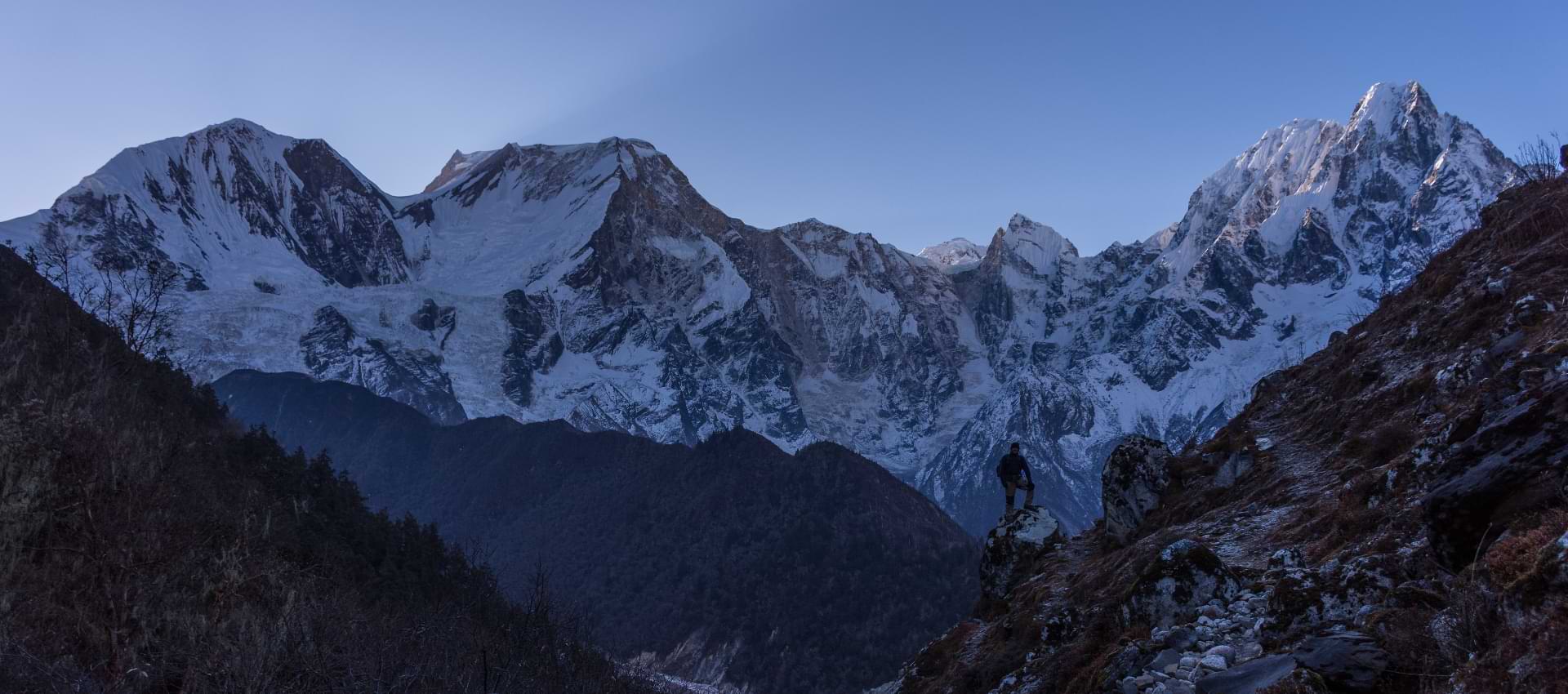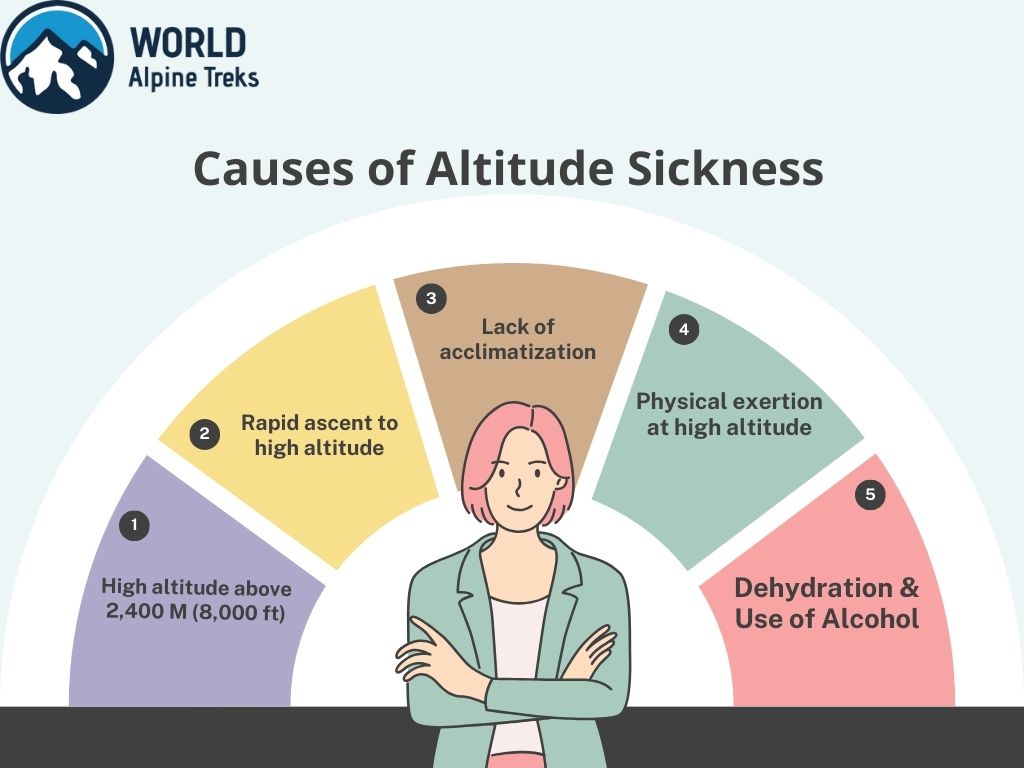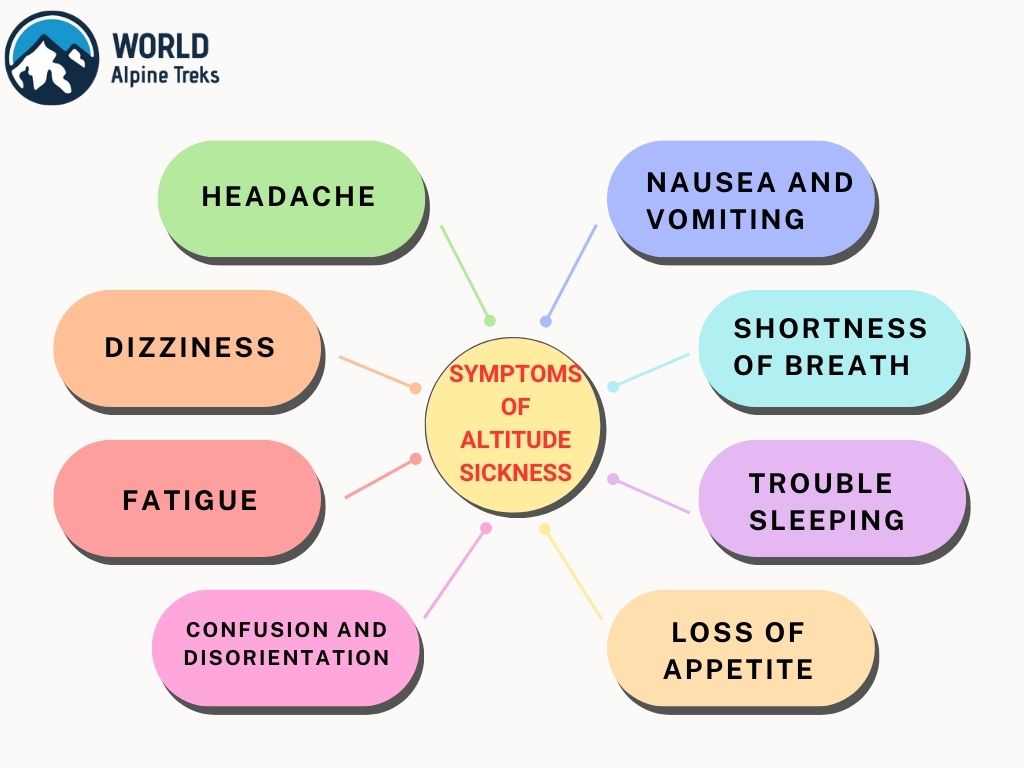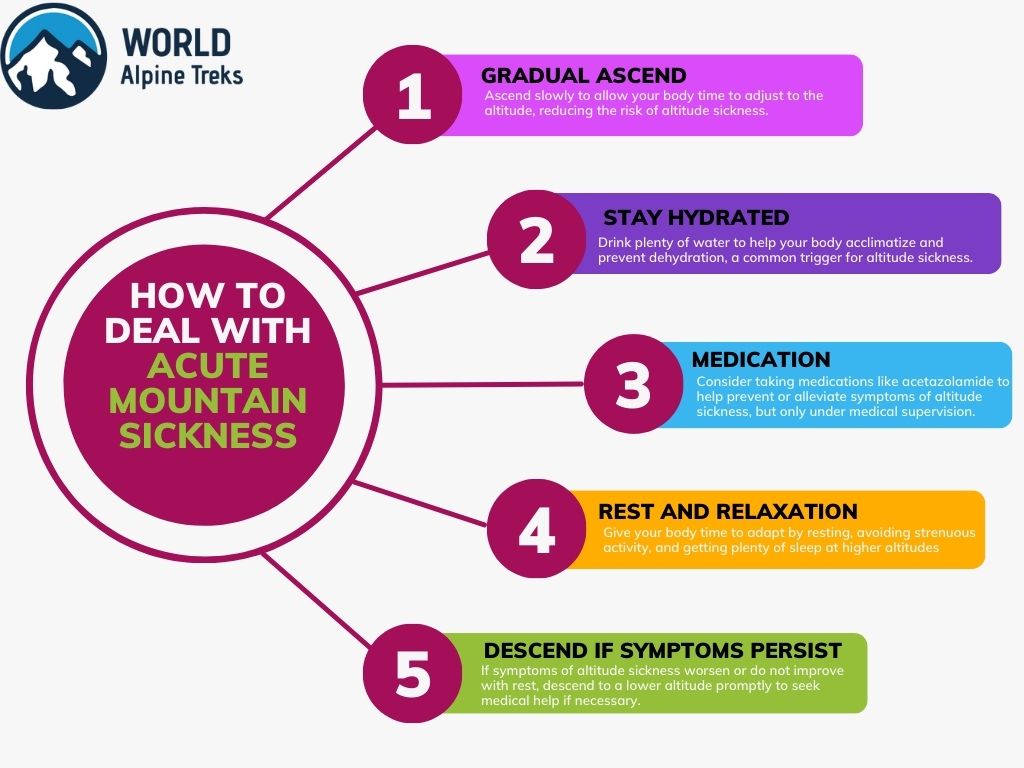
Altitude sickness while trekking in Nepal is a real concern that can affect you or your friends, regardless of age, trekking experience, or level of fitness. This is a major and valid concern shared by trekkers in Nepal. If we don't live at a very high altitude, our bodies aren't acclimatized to breathing in low oxygen.
For example, if you ascend fast, this can cause major problems like shortness of breath. If any of the symptoms aren't addressed quickly, they can lead to serious health conditions like HACE and HAPE.
All our itineraries allow us enough time to acclimate ourselves to the conditions safely. In this article, we will talk about What is altitude sickness, its symptoms, and other related stuff to ensure you stay informed and safe in your situation, so there are no worries.
When you reach above 8,000 feet (2,400m), altitude sickness becomes a real concern. Trekkers start getting symptoms like headaches, vomiting, and dizziness. It is extremely important to acclimatize to avoid altitude sickness during trekking in Nepal.
We suggest you ensure you acclimatize at a lower altitude before reaching the maximum elevation on the same day. It is also important to keep yourself hydrated and pace yourself.
Go slowly from day one, stay with the group so they can help you if you're feeling unwell, and take some rest.
Eventually, descending is the best remedy to get treatment for this very serious condition.

Recognizing the symptoms is a crucial step towards managing altitude sickness effectively.
Some of the common symptoms include:
One or two symptoms are common when you are at altitude. If you feel so, it doesn't mean you have altitude sickness. Remember, it doesn't mean these symptoms stay for long. If these symptoms persist, it's time to start taking things seriously. Take appropriate health measures.
In rare events, if symptoms of altitude sickness are ignored, this situation can lead you to serious medical conditions (HACE and HAPE). So it's worth knowing the symptoms of these conditions.

A swelling in the brain can occur due to a lack of oxygen if you ignore any mild symptoms of altitude sickness. This situation can develop in just a few hours and can be life-threatening.
The major symptoms of this situation are:
A person with HACE often feels okay and just wants to be left alone. HACE is fatal if not treated immediately. So if you experience any of these symptoms or notice anyone in the trek, immediately tell the trekking guide.
Altitude sickness while trekking in Nepal can also lead to another serious condition called HAPE. Fluid can build up in the lungs if any mild symptoms appear, and you ignore them. This condition takes a few days to appear after arriving at a high altitude. It can be fatal if you don't treat it as soon as it appears.
Major symptoms in this situation include:
You must tell your trekking guide if you or anyone in the camp experience any of these symptoms.
The best thing to do is to travel slowly from 2,500 m (8,200 ft) so your body gets enough time to acclimate itself.
All our itineraries give you enough time to acclimate yourself safely. Avoid ascending more than 300–500 m/1000–1600 ft per day (between sleep), as it is unsafe for you. Some waking days can be shorter, and there's nothing to worry about.
These are some of the most important things to do to avoid altitude sickness.
Altitude sickness during trekking in Nepal is a real concern that needs immediate treatment. Never ignore the symptoms of altitude sickness as soon as they appear. Rest can be a better solution to recover soon, as it will give you time to acclimate your body.

Rest and proper acclimatization are the best ways to manage mild altitude sickness symptoms. Yet, there are situations when medical attention becomes vital.
In cases of severe symptoms like:
It's time to seek medical assistance immediately. These symptoms may indicate HACE or HAPE that requires immediate medical treatment. Reduced oxygen levels and lower air pressure at higher elevations can cause altitude sickness, also known as acute mountain sickness (AMS).
Altitude sickness in Nepal trekking can occur at altitudes above 8,000 feet (2,400 meters) and is more common at altitudes above 10,000 feet (3,000 meters).
If you or someone else experiences persistent symptoms, immediately seek medical attention. Prompt treatment can help you recover quickly without complicating the situation.
If you experience any altitude sickness symptoms, it is time to rest so your body can acclimate. If the symptoms persist, descend to a power destination if necessary. Descending anywhere to at least 300 meters (1,000 feet) can alleviate altitude sickness symptoms significantly.
Open communication with your trekking guide. Inform them if you experience any symptoms to get the necessary support and guidance. Experienced guides can recognize the situation and advise you on the best course of action.
March to May and October to November are the major trekking seasons. Choosing to trek during these times can have a significant impact on your overall trekking experience and minimize any altitude sickness risk to a minimum.
Choosing the best time provides favorable weather conditions and clearer views of the stunning landscapes that can make your experience great! Heavy rainfalls happen from June to September, so avoid trekking in these months. Similarly, avoid trekking in the colder months (December to February).
Altitude sickness in Nepal trekking should be taken seriously. Many trekkers can avoid thinking it's common, but as they appear to persist, immediately get treatment.
Corrective measures like drinking water, avoiding alcohol, avoiding smoking, and asking for help if there are any concerns are paramount to tackling altitude sickness.